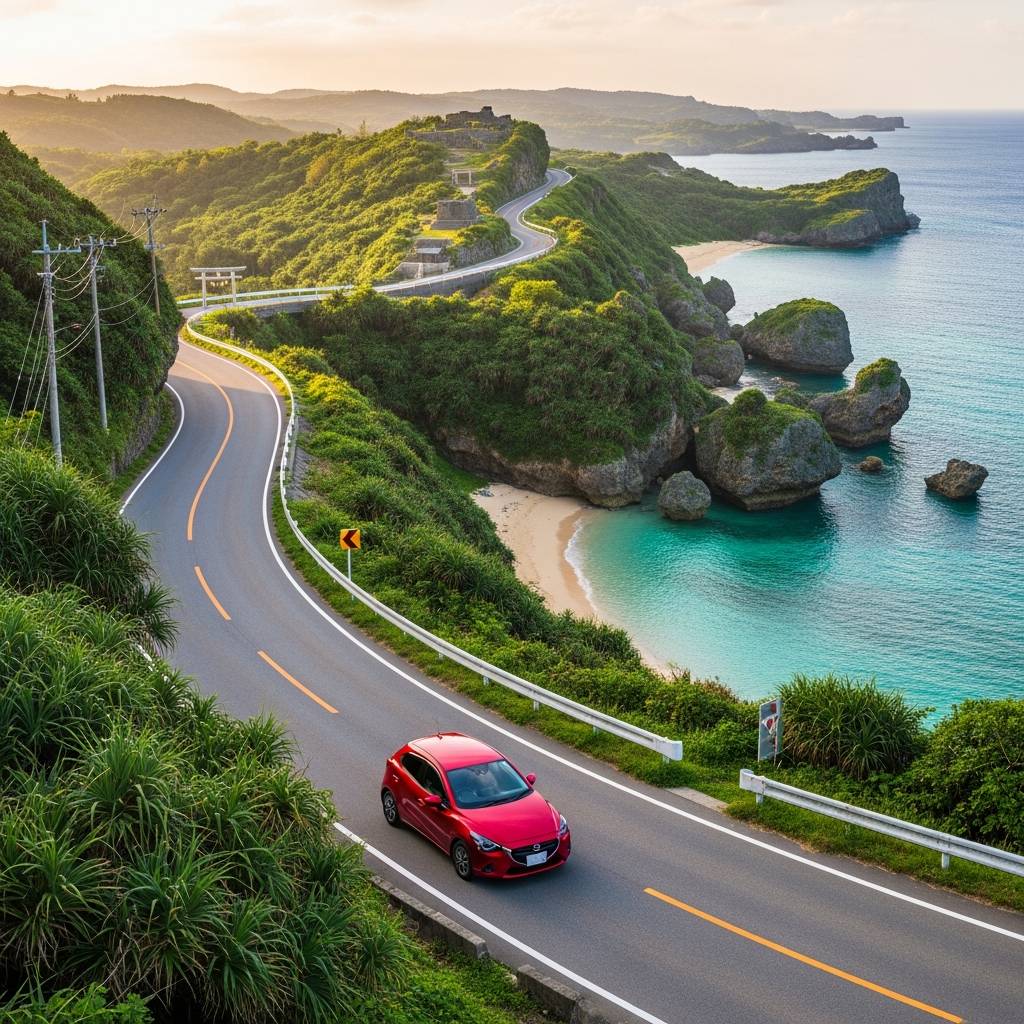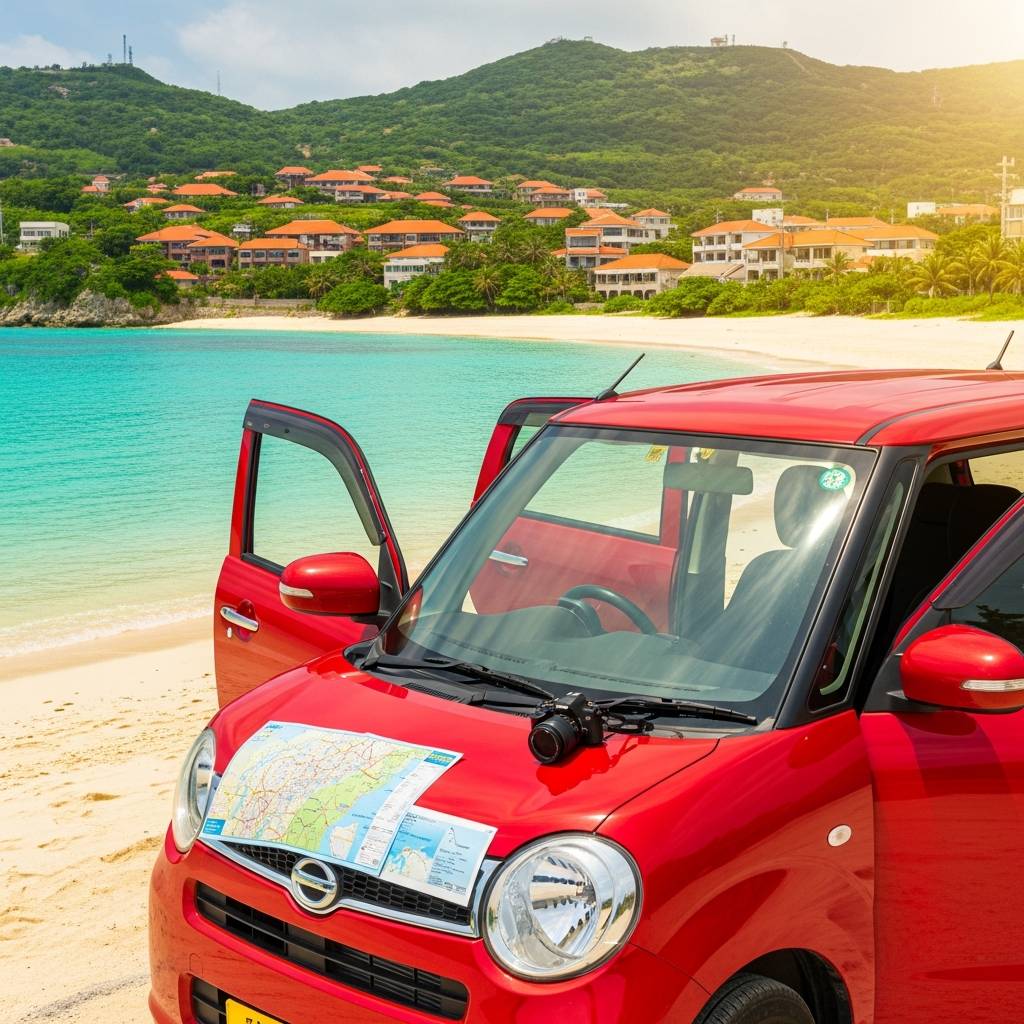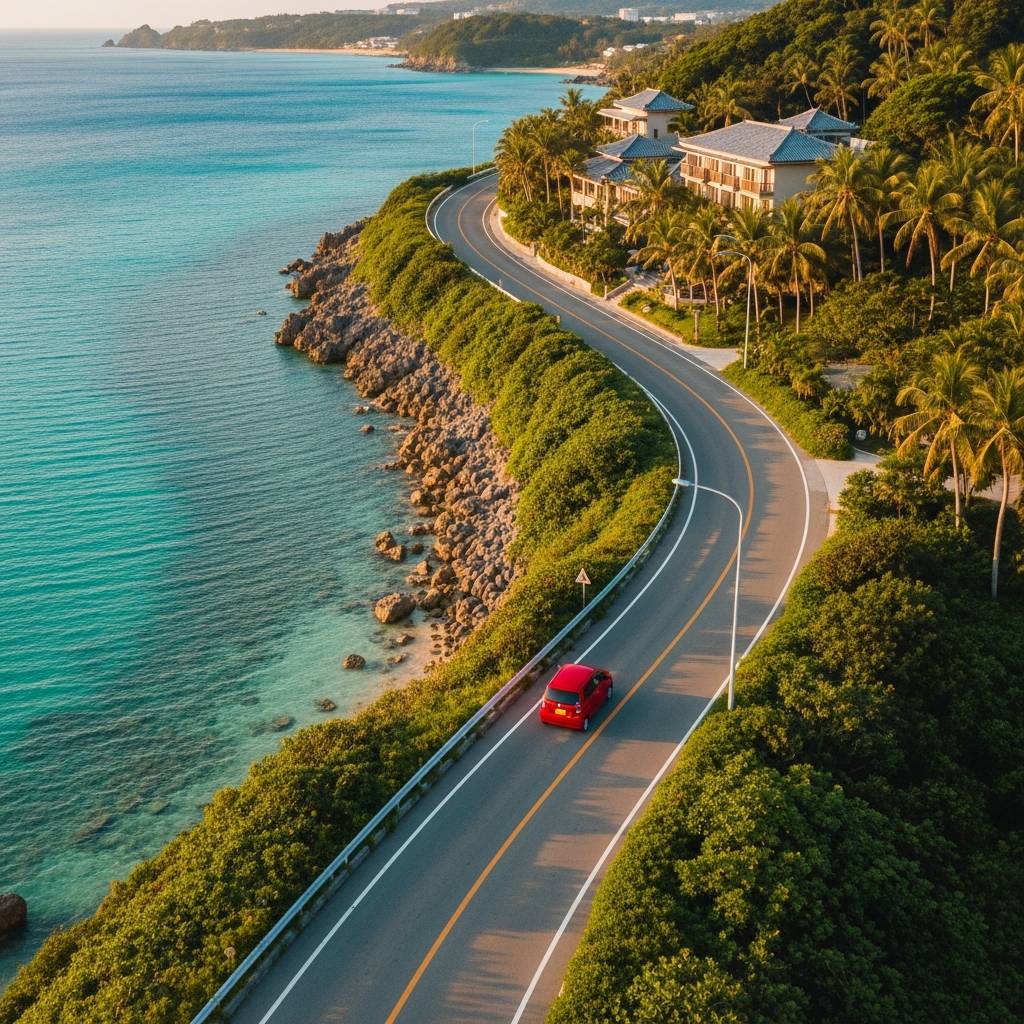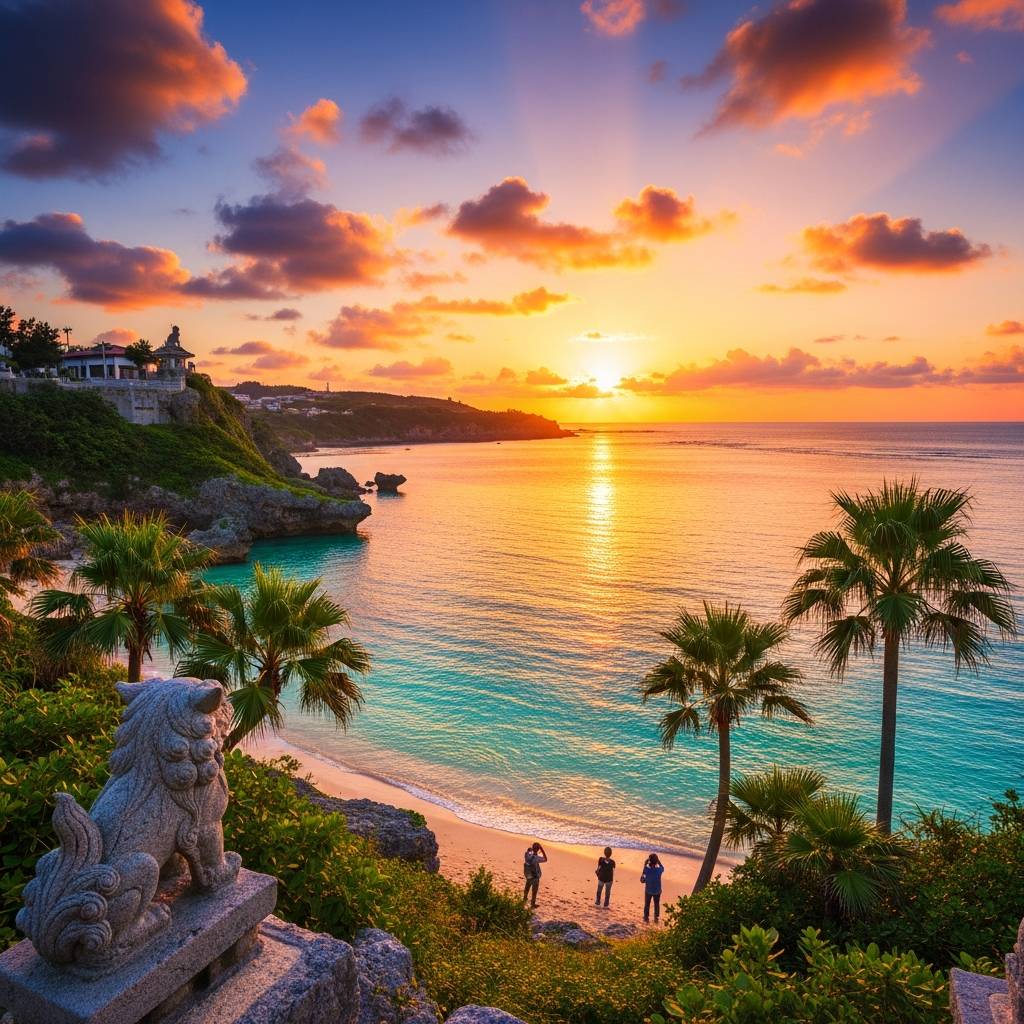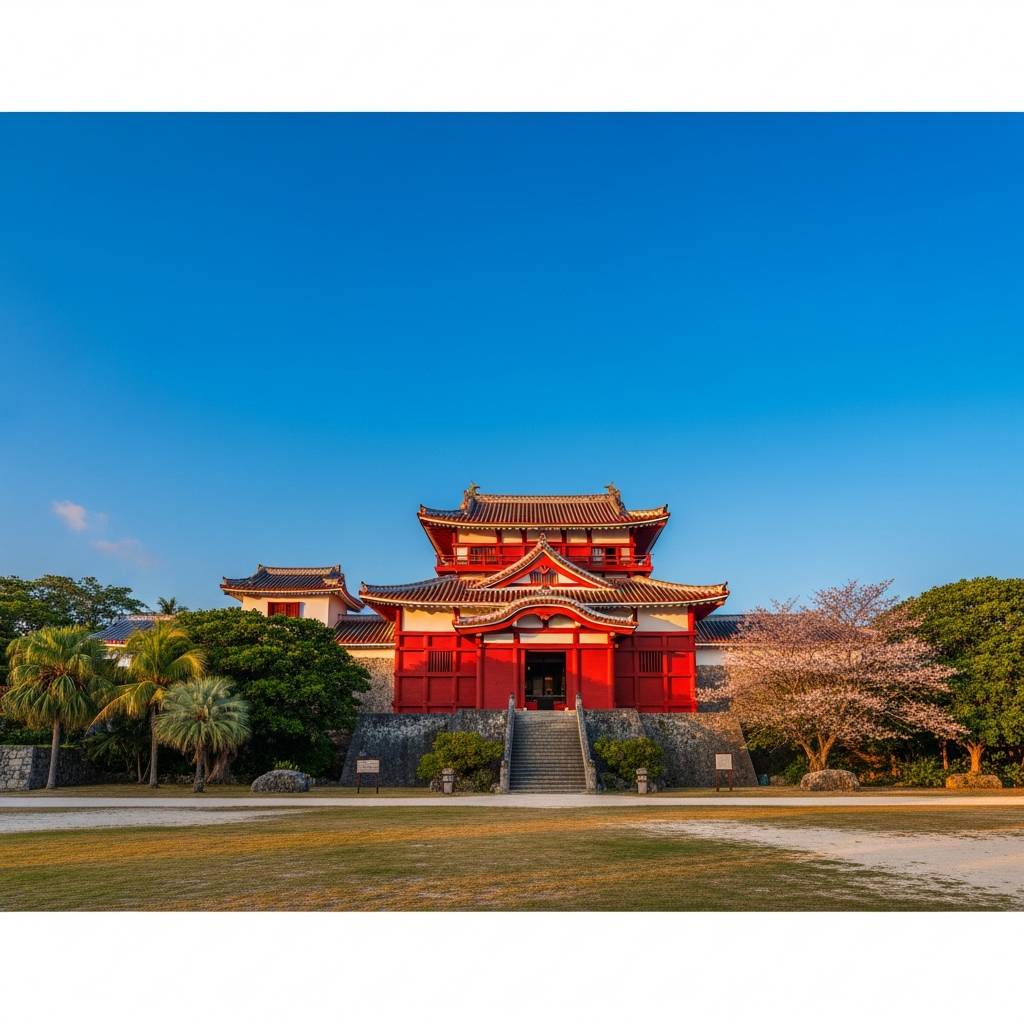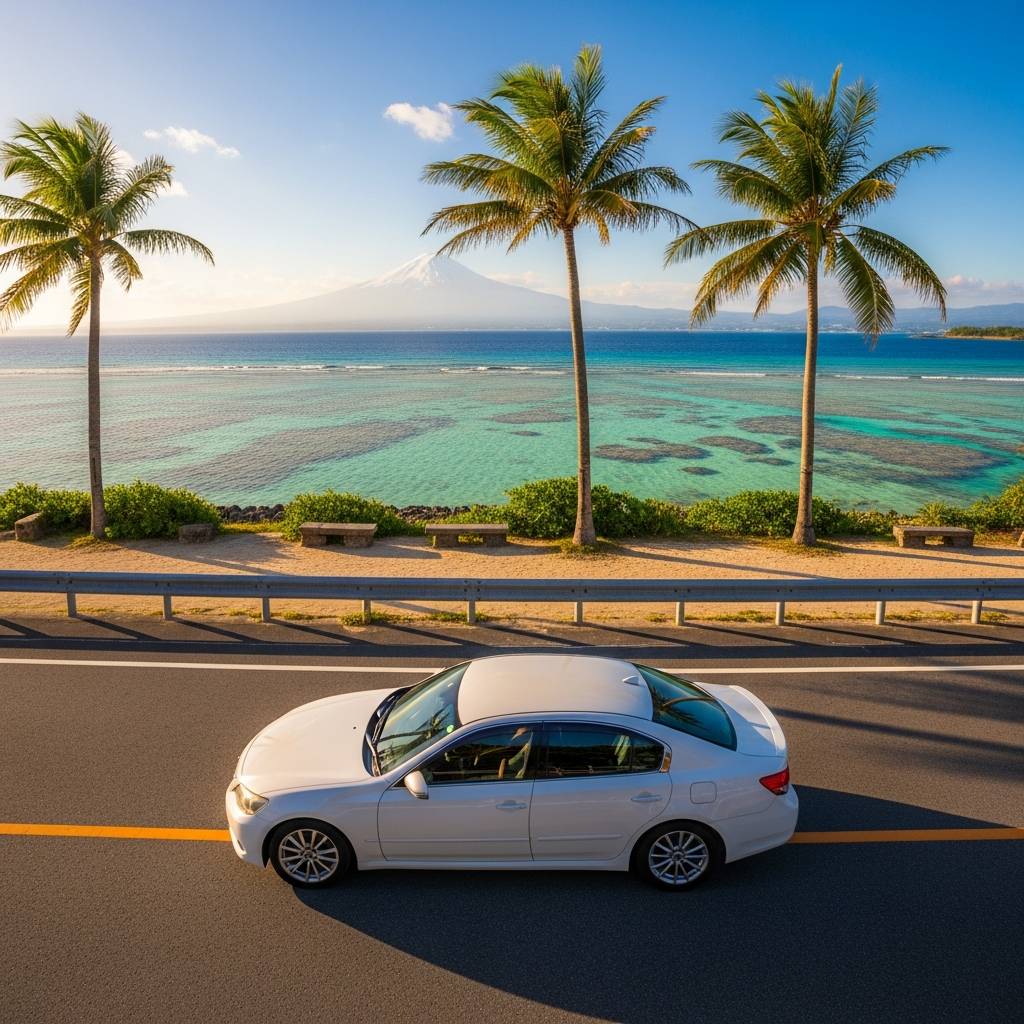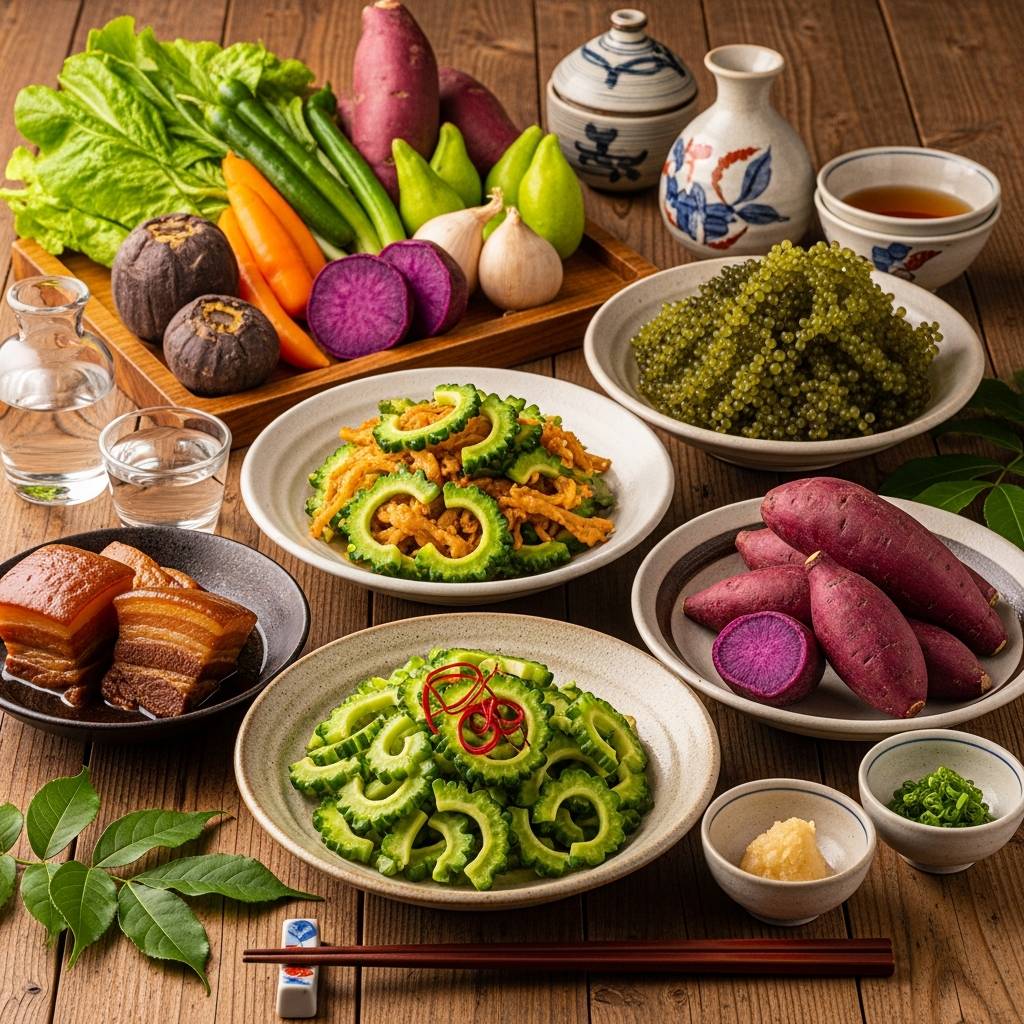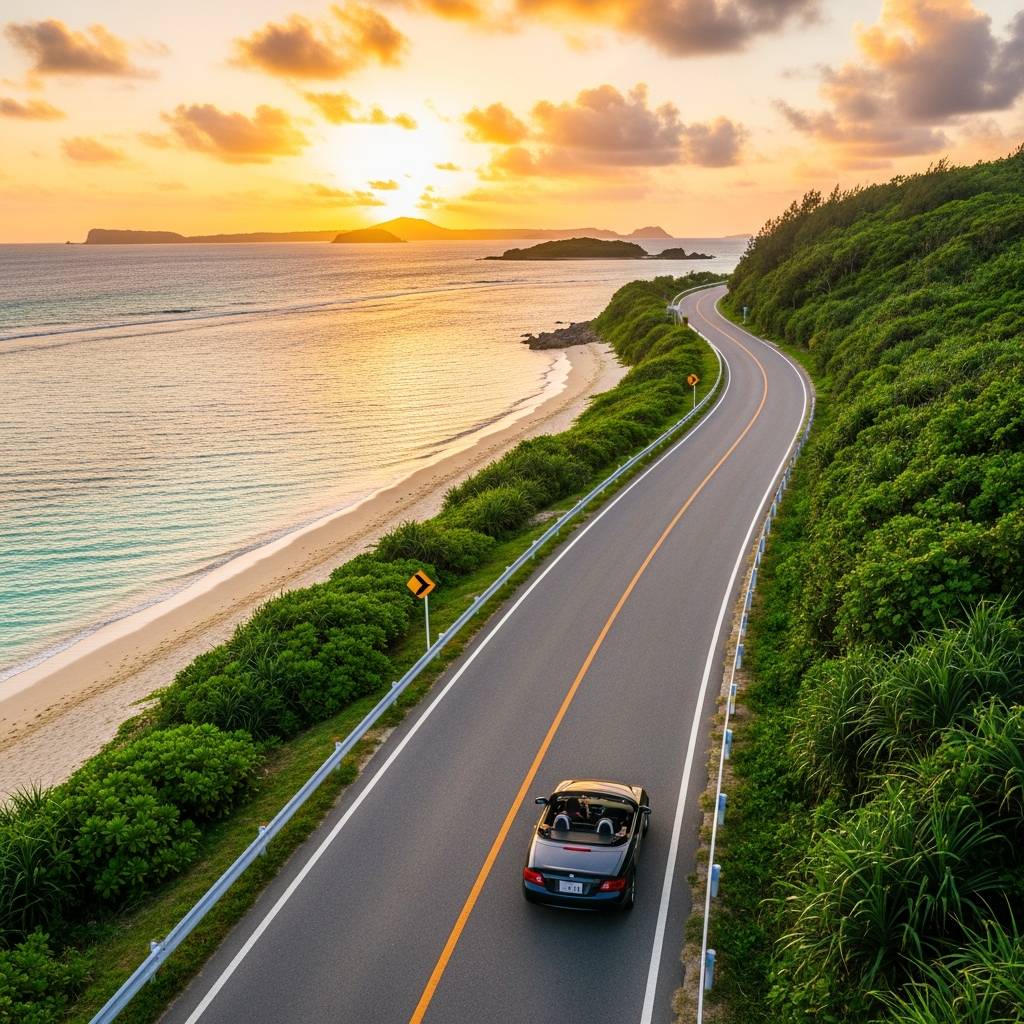Are you dreaming of exploring the authentic Okinawa that most tourists never see? While the popular beaches and attractions of Japan’s tropical paradise draw millions each year, the true magic of these islands remains hidden from those confined to public transportation routes. Having spent countless hours discovering the secret corners of Okinawa, I can confidently say that renting a car transforms your experience from ordinary to extraordinary.
Imagine driving along coastal roads where the ocean stretches endlessly on one side and lush green mountains rise on the other, with the freedom to stop whenever a perfect photo opportunity presents itself. Picture yourself being the only visitor at a pristine beach cove as the sun rises, or discovering an ancient site without fighting through crowds. These experiences aren’t just possible—they’re practically guaranteed when you have the keys to your own adventure.
In this comprehensive guide, I’ll take you through Okinawa’s most breathtaking hidden beaches that remain untouched by mass tourism, reveal the scenic driving routes that showcase the island’s natural beauty, and outline a perfect self-drive itinerary that connects ancient cultural treasures with spectacular sunset viewpoints. Whether you’re a first-time visitor to Okinawa or returning to dig deeper into its wonders, this roadmap to the island’s best-kept secrets will ensure your journey becomes truly unforgettable.
1. 10 Hidden Beaches in Okinawa Only Accessible with Your Own Wheels
While Okinawa’s famous beaches like Manza and Emerald attract thousands of tourists daily, the island’s true coastal treasures remain hidden from those relying on public transportation. These secluded paradises, accessible only with a rental car, offer pristine sands, crystal-clear waters, and the rare luxury of solitude in Japan’s tropical paradise.
Ama Beach on Yakabi Island features powdery white sand and calm waters perfect for snorkeling among vibrant coral gardens. With no public buses available, a rental car to the ferry port is essential for this hidden gem. Similarly, Hatenohama Beach on Kume Island requires driving to a local boat operator who can transport you to this three-kilometer sandbar surrounded by gradient blue waters.
For those seeking adventure, Mizugama’s rocky coastline near Onna Village offers natural pools formed by volcanic activity—a photographer’s dream accessible via an unmarked road that’s easily missed without your own vehicle. Further north, the rugged beauty of Kumaya Beach in Kunigami features dramatic rock formations and sea caves explorable during low tide.
The tranquil waters of Zantahama Beach in the westernmost part of the main island reward those willing to navigate the winding coastal roads with arguably the most spectacular sunset views in Okinawa. Meanwhile, Nagahama Beach on Iriomote Island combines white sands with jungle backdrops, requiring a rental car to reach the ferry terminal and then another on the island itself.
On Miyako Island, Sunayama Beach’s iconic rock arch demands early arrival for uninterrupted photographs—possible only when you control your schedule with a rental car. The crystalline waters of Aragusuku Beach on the remote Yaeyama Islands offer some of Japan’s best coral reefs, while the hidden cove of Shimajiri Beach on Kume Island provides natural shade from towering cliffs.
Finally, for the ultimate secluded experience, Ida Beach on the northern tip of Okinawa main island requires navigating narrow forest roads but rewards drivers with an untouched coastline where sea turtles frequently nest undisturbed by tourist crowds.
These hidden beaches aren’t just about avoiding crowds—they offer authentic Okinawan coastal experiences impossible to discover on typical tours. With a rental car, you control your schedule, can pack essential beach gear, and have the freedom to stay until sunset when these beaches truly showcase their magic. The journey to these secluded shores often reveals roadside fruit stands, small family restaurants, and viewpoints that become unexpected highlights of your Okinawan adventure.
2. Escape the Crowds: 5 Secret Scenic Routes for Your Okinawa Rental Car Journey
While Okinawa’s famous beaches and tourist spots draw crowds year-round, the true magic of this subtropical paradise reveals itself when you venture beyond the well-trodden paths. A rental car from companies like OTS Rent-a-Car or Times Car Rental gives you the freedom to discover these hidden gems at your own pace. Here are five secret scenic routes that showcase Okinawa’s breathtaking landscapes without the tourist crowds.
The Yanbaru Forest Drive winds through northern Okinawa’s dense subtropical forests, home to rare species like the Okinawa woodpecker and Ryukyu robin. This serene route between Kunigami Village and Higashi Village features multiple lookout points where you can spot wildlife while enjoying mountain vistas that few tourists ever see.
For coastal magnificence, the Kouri-Yagaji Island Loop offers spectacular ocean views with minimal traffic. After crossing the picturesque Kouri Bridge, follow the coastal road that circles both islands, revealing secluded coves and pristine beaches perfect for impromptu stops. The eastern side of Yagaji Island provides especially stunning sunrise views over the East China Sea.
The Nanjo City Coastline Drive in southern Okinawa connects charming fishing villages with panoramic ocean vistas. Starting from Chinen Cape, this route takes you past the sacred Sefa-utaki site and along dramatic cliffs before reaching the tranquil Azama Sun Sun Beach—all while avoiding the crowds concentrated in central Okinawa.
For a journey through time, the Motobu Peninsula Heritage Route connects historical sites with natural beauty. Begin at the remains of Nakijin Castle, then wind through the peninsula’s interior roads past traditional villages, terraced fields, and sacred groves that showcase Okinawa’s living cultural landscape.
Finally, the Miyako Island Cross-Island Trek (accessible via ferry with your rental car) rewards adventurous drivers with pristine beaches, dramatic sea cliffs, and the iconic Higashi-Hennazaki Cape lighthouse. The island’s limited public transportation makes a rental car essential for experiencing its untouched scenery.
Each route offers unique perspectives on Okinawa’s diverse landscape and can be comfortably completed in half a day, leaving time for spontaneous explorations. Pack snacks, water, and your camera—the most memorable moments often come from unexpected discoveries along these less-traveled roads.
3. From Ancient Ruins to Sunset Spots: The Ultimate Self-Drive Itinerary for Exploring Undiscovered Okinawa
While many visitors to Okinawa stick to the well-trodden paths of Naha and the major beach resorts, the true magic of the island reveals itself to those willing to venture further with their own rental vehicle. This curated self-drive itinerary takes you through Okinawa’s hidden historical treasures and breathtaking viewpoints that mass tourism has yet to discover.
Begin your journey early at the Nakijin Castle Ruins, a UNESCO World Heritage site that once served as the stronghold of the northern kingdom of Okinawa. Arriving before 9 AM not only helps you avoid crowds but also provides the perfect soft morning light for photographs of the ancient limestone walls that have withstood centuries. The castle’s elevated position offers panoramic views of the East China Sea that few organized tours allocate enough time to properly appreciate.
From there, drive along the coastal route to Kouri Island, crossing the picturesque 2-kilometer bridge that connects it to the main island. Unlike the popular heart-shaped rock that draws crowds, head to the island’s northern coast where pristine beaches remain virtually untouched. This area is ideal for a midday break, with crystal-clear waters perfect for snorkeling among vibrant coral formations.
For lunch, bypass the tourist restaurants and seek out Yuntaku Farm, a small family-operated establishment where you can enjoy authentic Okinawan cuisine made with ingredients harvested from their own fields. Their goya champuru (bitter melon stir-fry) and local sea grapes offer a taste experience that chain restaurants simply cannot match.
As afternoon approaches, drive inland to explore the Gangala Valley, a hidden limestone cave system with guided tours that take you through ancient geological formations and archaeological sites dating back 18,000 years. The adjacent Café Oasi, built within a natural cave, provides a uniquely atmospheric spot to rest and recharge with locally grown coffee.
Time your departure from Gangala to reach Cape Manzamo approximately one hour before sunset. While this dramatic limestone cliff is not entirely unknown, most tour buses will have departed by this time, leaving the spectacular natural arch formation and endless ocean views relatively uncrowded as the sun begins its descent.
For the grand finale of your day, continue to the lesser-known Cape Hedo, the northernmost point of Okinawa. Here, where the East China Sea meets the Pacific Ocean, the sunset creates a mesmerizing spectacle of colors that change minute by minute. The rugged coastline provides multiple vantage points that are completely inaccessible without your own transportation.
This self-drive route intentionally avoids the southern tourist hotspots, instead revealing an Okinawa of authentic cultural experiences and natural wonders that remain largely undisturbed. The flexibility of having your own rental car allows you to adjust your pace throughout the day, lingering at locations that capture your interest or making spontaneous detours when you spot something intriguing along the roadside.
Remember to download offline maps before setting out, as mobile reception can be spotty in the more remote northern regions. Also, keep your fuel tank topped up whenever possible, as gas stations become increasingly sparse as you venture away from urban centers. With these preparations in place, your self-drive adventure will unveil an Okinawa that few visitors ever experience—one of ancient mystery, breathtaking natural beauty, and the genuine warmth of local communities far from the beaten path.
For rental car reservations in Okinawa, visit “RENT A CAR HIROBA”
Make the best memories of your trip at the rental car plaza!
Click here to reserve a rental car ↓
・Cheap rental cars in Okinawa are at the lowest price starting from 1,500 yen. Rent-a-car Hiroba is recommended for reservations and comparisons.
https://rentacar-hiroba.com/

